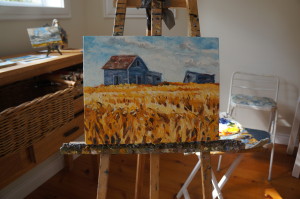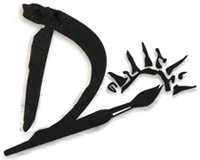The entrepreneur proved beyond successful.
News spread about the amazing product, it’s applications, and the company’s consistent quality service.
It had been years in development.
 new Larch trees- 8×10 oil study
new Larch trees- 8×10 oil study
Product creations were born from passion.
The entrepreneur had established relationships with vendors, sourcing quality supplies and scouted perfect locations.
The entrepreneur visited similar businesses thru the community and when traveling, painstakingly taking notes of what features did or did not work in these locales.
Marketing was developed strategically. Demographics were studied.
The entrepreneur engaged and invested in the community, supported charitable events, diversified projects for larger scaled clients, expanding the brand.
Community’s far & wide embraced the product applauding the entrepreneur’s efforts.
 New Farm 11×14 oil
New Farm 11×14 oil
Now, please reread the story, switching the word entrepreneur with artist.
Artists are rarely viewed in this light, even the artists themselves may not.
Why?
Some artists say it’s how we are portrayed in society “we have been dealt our role” powerless to change perception of art as a credible business creating a uniquely beneficial ‘product’.
Overwhelming scientific evidence continues to promote benefits of art in our spaces. If anything, this should be the time art is flourishing.
What else could be so unique that it benefits business, health, relationships, nourishes spirit, promotes healing, preserves & celebrates culture?
Artists complain success is driven by dealers, “we are their puppets”, they write.
Others complain a saturated market prohibits success, those reputable dealers have no space in their roster for new artists.
Without representation, they are prohibited from having a successful career, they say.
I believe we aren’t powerless any less than we are accountable to contributing to our success.
How?
First, look at your work. As they say ‘the buck stops here’.
Be your own worst critic. Consult pro’s opinions. Request honesty. Dedicate yourself to continually evolving your work.
Spend as much time on the business side of your art, as creating.
(like in the beginning of this post).
Build relationships.
If you are represented by a gallery, continue to spend a portion of your week on the business side. Communicate with your dealer, become a collaborator.
I have never felt like a puppet. I have great collectors/ dealers who believe in the art and work very hard to promote art in their communities.
They, in turn, know I will show up for openings, meet deadlines, help with advertising, work with specific client needs, direct clients to their venue, volunteer at exhibits and even on occasion, make fudge.
~
Note: When we are creatively fluid, science proves the more logical part of our brain shuts off when creating. A little valve closes up, freeing up space for imagination, for, according to Scientific American “genius”.
It’s the magic component to creating, but not so helpful for business.
Balance is key.
Maintain a schedule for creating, another for business. Keep your office separate from studio.
Be creator, agent, PR & demographic specialist, shipping & logistics handler, marketing & accounts department, etc.
Learning to wear so many hats isn’t always fun, but it trumps the feeling of powerlessness every day.
~
Robert Genn to an artist “You are an entrepreneur, you figure it out.”
